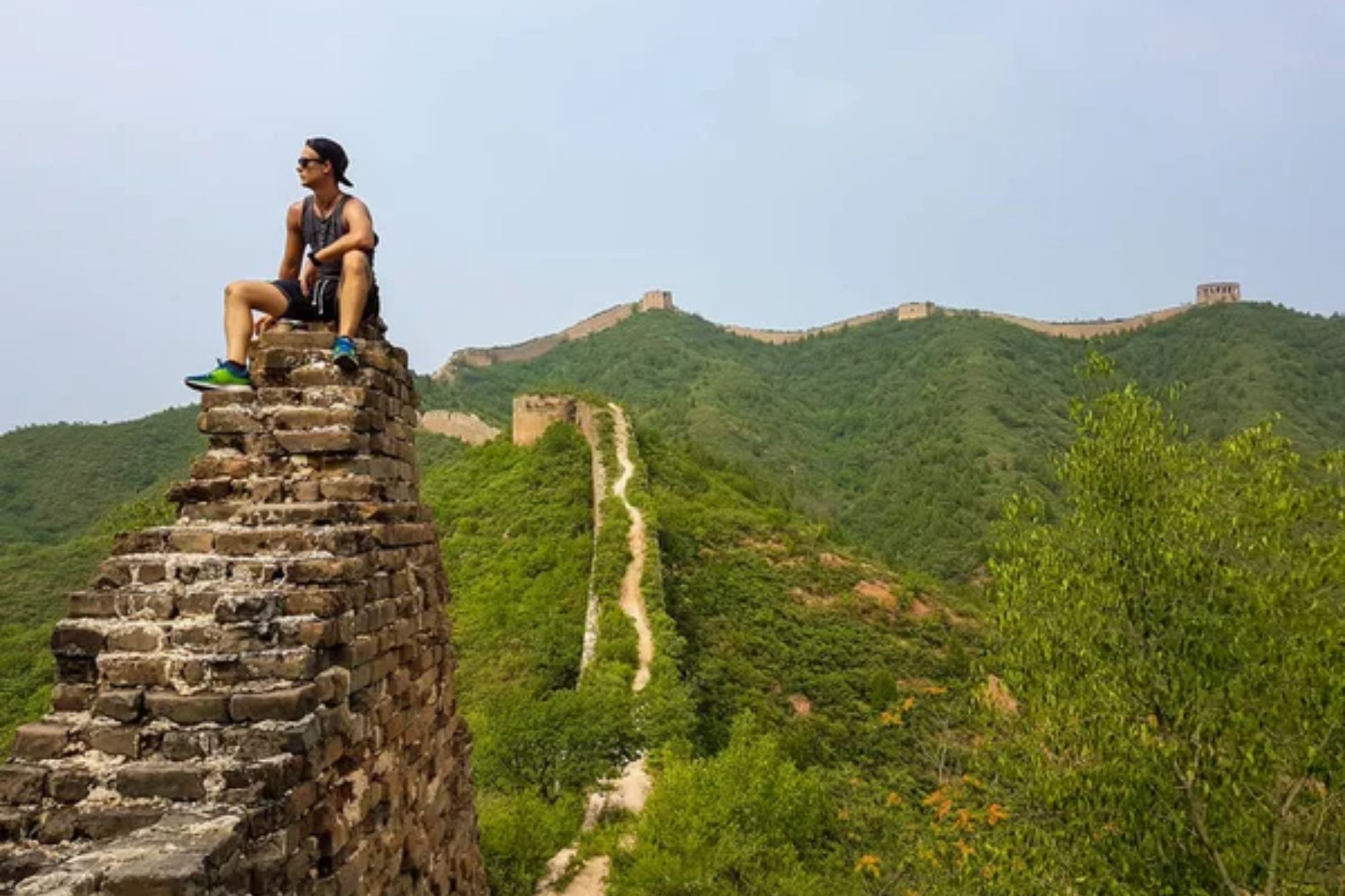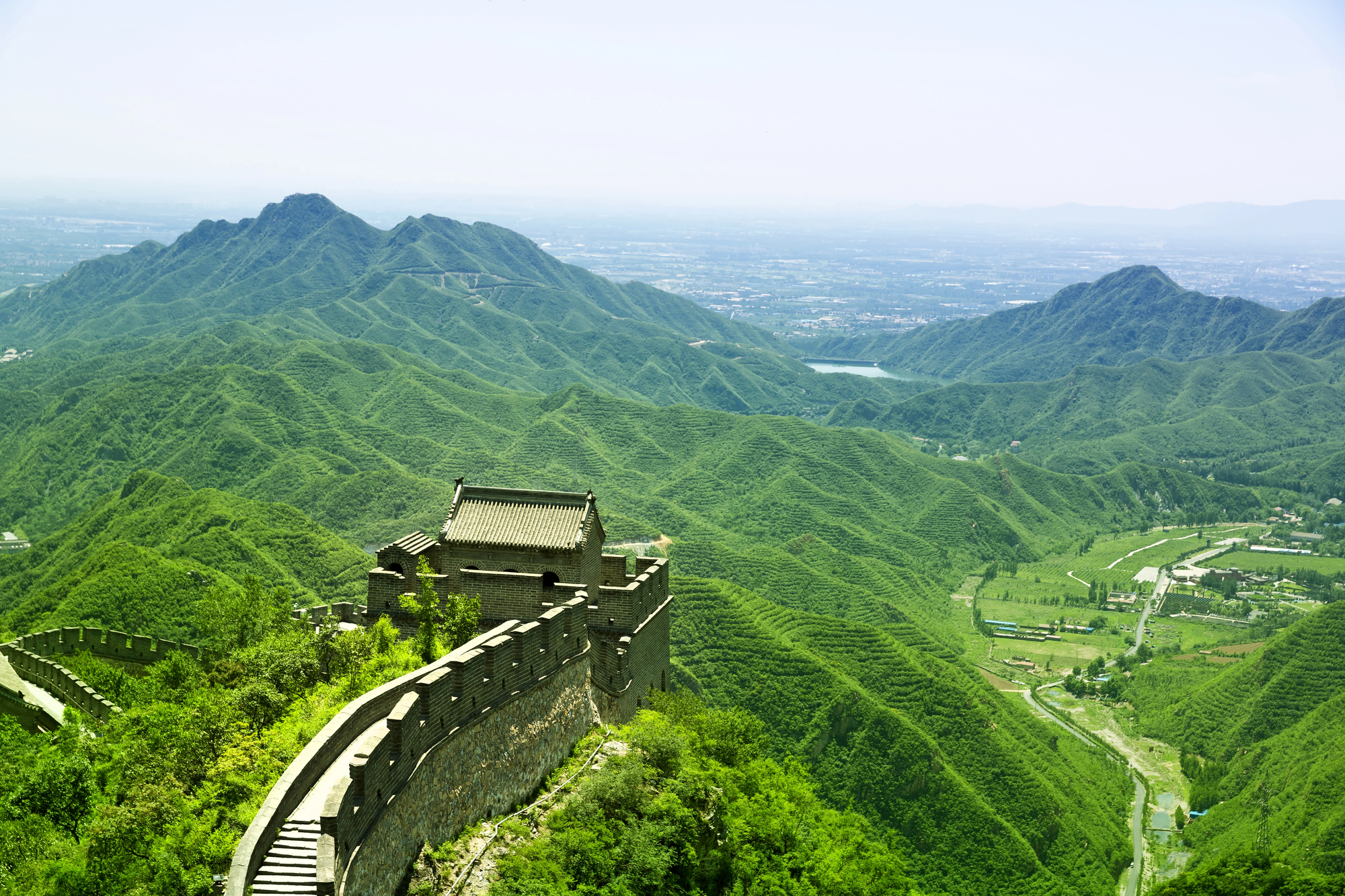Snaking across rugged mountain ridges for over 13,000 miles, the Great Wall stands as an almost incomprehensible feat of human determination. No matter how many photos you’ve seen, nothing quite prepares you for that first moment standing atop this ancient marvel.
Ready to make your Great Wall visit count? Here’s how to go beyond the typical tourist experience.
Choose Lesser-Known Sections

Badaling gets absolutely swamped – like Disney World levels of crowded. It attracts 65% of all Wall visitors simply because it’s closest to Beijing and extensively restored.
Mutianyu gives you the same convenience but much lower numbers, and Jinshanling gives you the iconic killer ridgeline photos with little refurbishment and few other tourists. Simatai also features restored and wild areas – and a water town at its base for good measure.
Use these if you actually want to be able to hear yourself think instead of battling tour groups, although they still have bearable facilities, so you won’t be camping entirely.
Consider Seasonal Timing

The northern Chinese climate creates radically different Wall experiences depending on when you visit – and timing can make or break your trip. Summer brings gorgeous green mountains but also suffocating humidity, temperatures above 90°F, and hordes of domestic tourists on school break.
Spring and fall? That’s the sweet spot – comfortable weather and spectacular seasonal colors transform those mountain landscapes. Winter visits reveal hauntingly beautiful snow-dusted ramparts against stark mountains – utterly magical though you’d better pack serious cold-weather gear. Smart seasonal planning dramatically improves both comfort and photo opportunities.
Arrive at Opening Time

Early morning sunlight bathes ancient stonework in golden hues – creating dramatic shadows that perfectly highlight the Wall’s undulating path across ridgetops. Those massive tour buses typically don’t arrive until mid-morning, which means dawn visitors enjoy relatively peaceful conditions during the day’s most photogenic hours.
Sections like Mutianyu open at 7:30am, though you’ll need to leave Beijing by 6am the latest to make it happen. Sure, that’s an early wake-up call – but having tranquil moments of reflection that are literally impossible during the midday tourist rush makes that alarm completely worthwhile.
Like Travel Pug’s content? Follow us on MSN
Pack Strategically

Walking the Wall isn’t a casual stroll – it involves serious climbing over uneven ancient stonework with tons of ups and downs. Sturdy hiking footwear isn’t optional – it’s absolutely essential unless you enjoy blisters and twisted ankles.
Those cute fashion sneakers? You’ll hate them within twenty minutes. Layer your clothing to handle temp swings between cool mornings and warm afternoons, and don’t skimp on sun protection.
Nothing ruins your experience faster than a painful sunburn at these exposed elevations. Throw in water bottles, some energy bars, and basic first aid stuff so minor issues don’t cut your once-in-a-lifetime experience short.
Hire a Knowledge Source

While physically impressive, the Great Wall reveals its deepest significance through understanding the historical, cultural, and engineering contexts behind its construction. Private guides with genuine historical knowledge transform seemingly random watchtowers and battlements into comprehensible defensive systems.
University history students often work as affordable guides, combining academic knowledge with conversational English skills. Even smartphone audio guides provide significantly more insight than attempting interpretation through limited signage.
This historical context transforms visual impressions into a meaningful understanding of this massive undertaking’s purpose and construction.
Explore Beyond Restored Areas

Those perfectly reconstructed Wall sections offer comfortable walking, no doubt – but sometimes they feel a bit sanitized compared to more authentic partially-wild sections. At Jinshanling, beautifully restored segments gradually transition into unrestored ancient stonework where nature slowly reclaims human construction.
These less-manicured areas often prove most emotionally powerful – revealing the Wall’s true age and vulnerability despite its massive scale. Venturing into these transitional zones provides perspective impossible in those postcard-perfect tourist sections, while still remaining completely safe without requiring specialized equipment or taking excessive risks.
Like Travel Pug’s content? Follow us on MSN
Bypass Cable Cars

Most popular sections tempt visitors with cable cars that zip from parking areas straight up to the Wall. Convenient? You bet. But these mechanical shortcuts rob you of the traditional approach experience – those ancient stone paths winding through forests and farmland.
Weather permitting, take the walking routes that approach the Wall gradually, letting its immense scale reveal itself bit by bit rather than all at once. This traditional approach mirrors how travelers experienced the structure historically, building anticipation rather than instant gratification.
The extra effort makes you appreciate the Wall’s strategic positioning across incredibly challenging terrain.
Consider Hiking Between Sections

If you’re reasonably fit, think about exploring extended Wall segments connecting major restored sections – experiencing those dramatic transitions between tourist-friendly reconstruction and virtually untouched ancient remnants. The hike between Jinshanling and Simatai takes about 4 hours over 6 miles, showing fascinating variations in construction techniques, defensive features, and landscapes impossible to appreciate from standing in one spot.
These through-hikes need decent fitness, proper gear, and sometimes special permits, depending on current rules. The payoff? Experiencing the Wall as the continuous defensive system it was designed to be, not just isolated viewpoints.
Document Thoughtfully

A world wonder deserves better than rushed selfies that just prove “I was here” without capturing what made it special. Instead of shooting only those same angles seen on countless postcards, look for unique perspectives that capture your personal experience – the scale, texture, and relationship with surrounding landscapes.
Morning or late afternoon light reveals architectural details through shadows that vanish during the harsh midday sun. Getting shots of local farmers harvesting crops below or authentic decay in unrestored sections tells more compelling stories than generic tourist photos.
Think about what made YOUR Wall experience unique and try to capture that.
Like Travel Pug’s content? Follow us on MSN
Embrace Weather Variation

Clear blue skies make for safe postcard shots, sure – but unexpected weather often creates the most memorable experiences. Morning mist swirling around ancient watchtowers creates ethereal scenes impossible on perfectly clear days. Dramatic storm clouds provide compelling backdrops rarely seen in typical tourist photos.
With proper rain gear, “bad” weather transforms from disappointment into an opportunity for unique experiences and images. These atmospheric conditions frequently yield the most striking photos and lasting memories, way beyond those generic sunny-day shots everyone else takes home.
Allow Ample Time

The Great Wall deserves unhurried exploration rather than rushed checkbox tourism. Half-day visits are the absolute minimum needed for appreciating changing light, exploring multiple watchtowers, and discovering both restored and wilder sections.
Full-day experiences let you hike extended segments or explore less-visited areas. Staying overnight at nearby guesthouses gives you sunset and sunrise opportunities when day-trippers have disappeared.
This generous time allocation transforms hurried sightseeing into thoughtful engagement appropriate for what remains humanity’s largest construction project.
Engage Local Communities

Villages nestled below the Wall have coexisted with this massive structure for hundreds of years. Some sections feature small museums displaying artifacts discovered during restoration alongside photos documenting local history.
Rural restaurants near Wall entrances serve regional specialties using ingredients grown in surrounding fields you can see from watchtowers above. These community connections provide cultural context impossible through purely historical appreciation, while supporting local economies beyond mass tourism operators.
Meaningful interactions with area residents add a human dimension to what might otherwise remain a purely architectural experience.
Like Travel Pug’s content? Follow us on MSN
Verify Current Access Regulations

Great Wall management policies change with frustrating frequency. Sections close temporarily for restoration or implement new permit requirements with minimal notice.
Official websites often contain outdated info, making direct verification through hotels or tourism offices essential before traveling significant distances. Some less-visited sections require hiring local guides not for information but simply to satisfy access permission requirements.
This advanced research prevents the disappointment of unexpected closures or regulatory changes that might otherwise derail carefully planned experiences.
Find Quiet Reflection Spots

Even at busier sections, quiet spaces exist for those willing to walk further than most visitors or wait for tour groups to pass by. Finding a private watchtower perch lets you absorb the Wall’s massive scale while contemplating the astounding human effort required for its construction across impossibly rugged terrain.
These quiet moments – watching distant farmers in fields below or observing weather patterns moving across mountain ridges – often become the most meaningful souvenirs of your visit. Patient travelers discover that crowds predictably bunch up at certain spots while leaving equally impressive sections just a short walk away practically empty.
Beyond the Postcard

The Great Wall becomes something more than a tourism icon when experienced thoughtfully rather than merely photographed. This extraordinary structure tells complex stories about human ingenuity, imperial ambition, cultural preservation, and engineering adaptation to brutal geography.
The most meaningful encounters happen when approaching with curiosity about these deeper narratives rather than simply collecting the same photos as everyone else. Maybe the Wall’s greatest lesson is showing how human determination can literally reshape landscapes when driven by sufficient purpose – a message absorbed through thoughtful engagement rather than hurried tourism.
The most rewarding Great Wall experience happens well beyond those familiar postcard shots.
More from Travel Pug

- Cities Growing so Fast You Won’t Recognize Them in 10 Years
- 13 Destinations Where Tourists Regularly Regret Their Trip
- 20 Obscure WWII Sites Even History Buffs Don’t Know About
- 10 Under-the-Radar Mountain Towns That Are Both Affordable and Beautiful
- Remote Villages in Europe Where You Can Live for Free in Exchange for Work
Like Travel Pug’s content? Follow us on MSN
